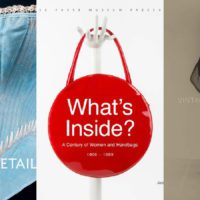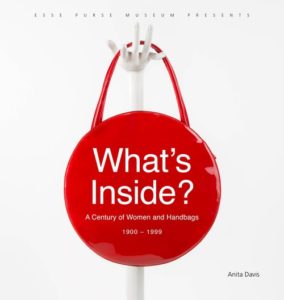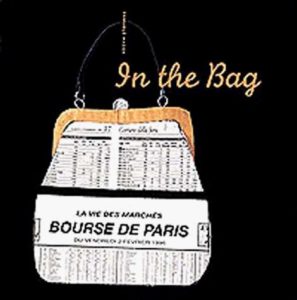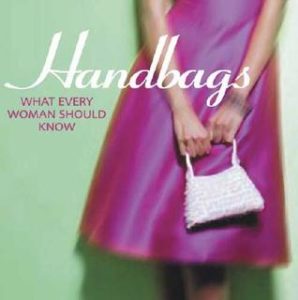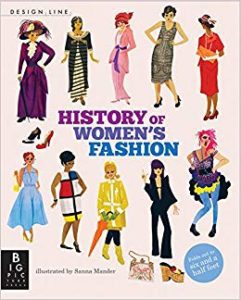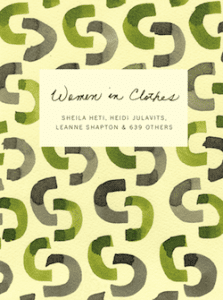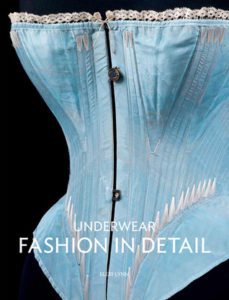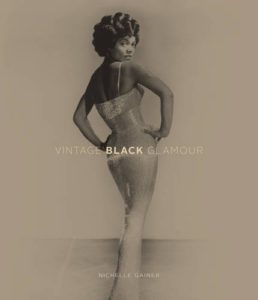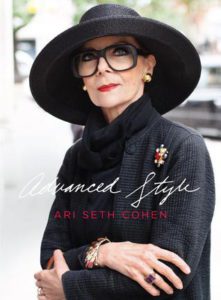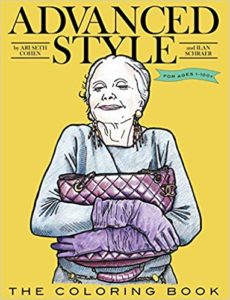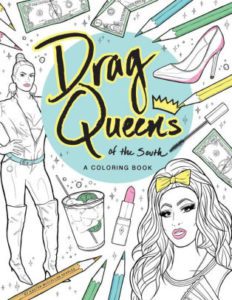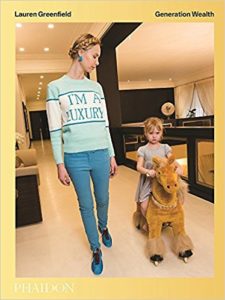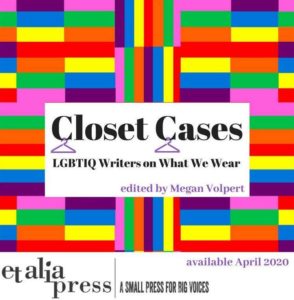Women carry a lot on our shoulders. And wear a lot on our sleeves. There are double entendres here.
I was raised in apparel retail (my parents owned and ran a clothing store) but am otherwise nothing of a fashion expert. In years past, I recall feeling bereft flipping through glossy magazines that can lead one to believe fashion equals what can be bankrolled. But recent work and reading have reminded me that truths are how we write them, and have lent new meaning to styling and dressing myself.
My renewed sense of fashion began about three years ago with a purse. Or rather, a purse museum. Before stepping into ESSE Purse Museum & Store—the only purse museum in the US and one of only three in the world, in my home of Little Rock, Arkansas—I had little idea how much power and history the purse holds. This year, through my small press, I had the opportunity to edit and publish the museum’s book: What’s Inside? A Century of Women and Purses 1900–1999, just released earlier this week. The editing process put me in a more intimate relationship with author and museum founder/owner Anita Davis’s exploration of history, art, and the feminine. Immersed in her vision, I’ve not only rethought the purse, but fashion in general. And I’m hardly alone in this: Davis has just been honored as a 2018 Global Voice Award recipient by the World Woman Foundation, which recognizes “dedication to transforming the lives of women around the world.”
As women everywhere are sharing our stories, the voices that ask, “But what was she wearing?” are hushed. Standing before our closets each day, “What will I wear?” becomes the only question that matters. So, it seems timely to reconsider (and perhaps redefine) our relationship with dress as well, ensuring that we appreciate and acknowledge the ways that we daily participate in this uniquely personal art.
***
What’s Inside? A Century of Women and Purses, 1900–1999 by Anita Davis
A lifelong collector of purses (and many other things) and strong believer in dreamwork, Davis’s vision to open ESSE Purse Museum began with a series of dreams. As she shares in the book’s preface, the faces of women she didn’t know came to her “in flashes, their faces appearing one after another after another like rolling pictures… they whispered into [her] ear as one: ‘We have more stories to tell.’” Realizing that the strange faces were those women who once carried the purses she’d collected over three decades, her duty to share their stories through their purses became clear, and her work began to open the only purse museum in the country. It quickly became clear that the museum was about much more than purses. Davis realized the team was:
…actually curating a women’s history museum, one that tells the story of the American woman from 1900 to 1999 through her constantly changing purses and the items she carried in them… a mini history lesson, with a dose of fashion.
The book follows the museum’s fifth birthday, and continues Davis’s vision through “clutch-sized vignettes and gleaming minaudières” in collaboration with her artist daughter, photographers, and writers. Rather than being filled with expensive, luxe bags (only a couple appear throughout), it focuses on celebrating the everyday woman in twentieth century America. It is about the yous, the mes, our mothers, grandmothers, aunties, and women who aren’t blood but who’ve meant a great deal to us—our collective foremothers versus the fashion brands or icons that are so often are the focus of fashion books.
You’ll likely find yourself awash in nostalgia over the spilled contents of purses during the decades in which you’ve carried them (for me, the Tears for Fears cassette tape from the 80s and the Blockbuster Video cards from the 90s got it just right). In the 70s, the soft suede cross-body bag came into fashion “so arms could be freed for living and loving.” A disco diva’s bag might reveal “just maybe, cocaine to keep her energized.” This book is loads of fun and the Christmas gift I’ll be sending to all my girlfriends. I love the idea that as I read it, I’m “[b]reathing life into often unnamed heroines,” and “rever[ing] the stylish changemakers whose struggles and triumphs forged the way for generations of women to come.”
In the Bag by Samuele Mazza
This book left me asking, “Why go around carrying some boring, story-less bag when I could make my own own creepy head purse and carry it by its hair, or go with a buns, breast, or belly/fetus/umbilical cord tote?” That it’s published by my publisher crush—the all-things-cool, Chronicle Books—makes me like it even more.
Handbags: What Every Woman Should Know by Stephanie Pedersen
I don’t like the finger-wagging “should know” in the title and find myself repelled by the description of the book as “guaranteed to satisfy the cravings of even the highest maintenance bag addicts.” Eyeroll. However, it is still kind of a neat little book with informative history. And, when rethinking, it can be important to consider what feels yucky on the path to finding what feels right.
History of Women’s Fashion by Natasha Slee, illustrated by Sanna Mander
This accordion book folds out to offer six feet of colorfully illustrated fashion adventure for adults and kids alike. I got it for my six-year-old daughter, but have found myself unfurling it even more than she has. It’s great to have a quick, accessible way to put fashion history and trends into perspective, and silhouettes with textual references appear on the flip side. Accessories like hats, handbags, and footwear appear at top and bottom with apparel in the center. Ugg Boots and flip-flops made the cut for the year 2000, alongside fair-trade bangles and a patterned Gucci Dress, so it definitely runs the gamut from inexpensive to pricey, dressy to casual.
Women in Clothes by Sheila Heti, Heidi Julavits, Leanne Shapton, & 639 Others
A New York Times bestseller, this is an essential read for every woman—if she doesn’t already—to feel confident that her way is okay. Its quirk is liberating and its sentiments are reflected even in the book’s structure, an organizational style all its own which categorizes miscellany from all six hundred forty-twoo (including the authors) international women into sections titled: surveys, conversations, poems, projects, on dressing, surveys, collections (think colorful grids of images from false eyelashes to earplugs to bras to stolen boyfriend t-shirts), wear areas, and compliments. From essays like Shani Boianjiu’s “At the Checkpoint,” including “ten fashion Dos and Don’ts for the teenage Israeli female soldier” to an “as told to” with a declutter coach, there’s lots of richness and variety along with practical tips. It is about clothing, but goes beyond dressing to include scents, flossing habits, images and related thoughts on mothers before they had children, approaches to spending and amounts spent, and so much more. The authors invite you to step into their conversations as if you were another friend on the phone or pouring a whiskey alongside them. I felt like they were saying, “C’mon! Let’s ask a bunch of questions to women and see what we find.” I am glad I followed.
Underwear: Fashion in Detail by Eleri Lynn
In early 2018, ESSE Purse Museum & Store had a provocative exhibit called Exposed: Unmentionables 1900s–1960s, offering “a unique view into a woman’s life and the measures she will take to achieve a certain look.” The exhibit refreshed my memory of my beloved grandmother’s girdle, which she wore every day of her life, and renewed the question in my mind about the link between pain and beauty. Underwear’s author is a fashion curator at the Victoria & Albert Museum in London—the world’s largest museum of decorative arts and design. Full of color photographs and detailed illustrations, it shares the museum’s collection from the sixteenth century to notable current trends.
Vintage Black Glamour by Nichelle Gainer
Intended to restore “black pioneers in various fields,” many of whom had been filed away or forgotten, into the spotlight, this book’s satin cover gives an initial tactile impression of the smooth, stylish, and spirited ladies within. Replete with readily recognizable names like Maya Angelou, Josephine Baker, Marian Anderson, Iman, and Donna Summer, it also introduces women like Saidie Sellyna, an actress, singer, and dancer who worked in Russia in the 1920s. “[L]ittle else is known about her,” says Gainer, leaving us to ponder whether she fell into obscurity alongside many other Black women while their white counterparts garnered more attention. This is a glorious book for any coffee table with lots to offer.
Advanced Style by Ari Seth Cohen
In my fortieth year, I find myself seeking the advice of elder wise women more and more, and why should fashion cues be different? As my mother ages, I also watch closely as her choices shift (to my surprise, to more pleather and plunging necklines!). I found this book for sale in the ESSE Museum Store and am so glad I picked it up. Cohen has been credited with encouraging the fashion industry’s recent movement to embrace older models. Though young and male, the author’s closeness to his grandmother and having been “captivated by amazing older women” from a young age led him to begin his Advanced Style blog and ultimately this book (and its follow-up, Advanced Style: Older & Wiser). It’s a blast to flip through images of women unapologetically splashing color, volume, and flair in ways uniquely their own along with quotes like “Young woman, you’re gonna be an old woman someday… Don’t worry about getting older. Every era it builds character.”
Advanced Style, The Coloring Book by Ari Seth Cohen and Ilan Schraer
What fun to color the stylish seniors spied in the book in your own favorite hues!
Iris Apfel: Accidental Icon: Musings of a Geriatric Starlet by Iris Apfel
No discussion of platinum style (or style in general) is complete, of course, without Iris Apfel. The introduction is so very encouraging, suggesting the benefits of feeling our ways through life acting not out of comfort, but curiosity:
If something sounds exciting and interesting, I do it—and then I worry about it later. Doing new things takes a lot of energy and strength… Most people would rather just go with the flow; its much easier. But it’s not very interesting.
And “If you can’t have fun, you might as well be dead” pretty much sums up Apfel’s fashion philosophy of going all out every day. She can afford Chanel, but is not afraid to put an expensive bauble alongside an inexpensive one if they compliment each other. Forget less is more… more is more!
Drag Queens of the South: A Coloring Book by Kasten Searles
Speaking of fun: If you are interested in having some, you’ll want to snatch up the sassy collection of hand-drawn illustrations of drag queens and kings and their ephemera (think stilettos, mascara wands, cocktails) by graphic designer and illustrator Kasten Searles.
Lauren Greenfield: Generation Wealth by Lauren Greenfield
To understand a subject, it never hurts to investigate the extremes. This 504-page golden, satin-clad tome is heavy in more ways than one. Its girding is the “I Shop Therefore I Am” attitude and the desire for wealth more than actually having it. The lengths we humans will go to are pretty frightening, and award-winning documentary photographer and filmmaker Lauren Greenfield’s work stares excess in the face as readers look on, appalled and amazed. There is an accompanying documentary that I haven’t seen, but it looks like it didn’t do so well on the Tomato-meter. The book, though, is a must for anyone wanting to do some deep thinking about consumer culture.
Closet Cases: LGBTIQ Writers on What We Wear by Megan Volpert
Closet Cases isn’t coming out until spring 2020, but I’m thrilled to be its editor and publisher. Megan Volpert says,
We shape our identity as LGBTIQ people by what we put on our bodies. We signal to each other with our clothes in silent community on the street. Jean jackets can be armor. Bracelets can be spiritual totems. A belt can save your life, or take it. So, this is not merely a “fashion book.” It’s a collection of artifacts that testify to the power of fashion as a verb, to the complex and lovely strategies that govern what we do in the LGBTIQ community to build authentic selves that are both comfortable and seen.
If you’re interested in submitting, follow @meganvolpert or @etaliapress. Volpert is also currently at work on RuPaul’s Drag Race and Philosophy, forthcoming for the 2019 holiday season. Stay tuned!
